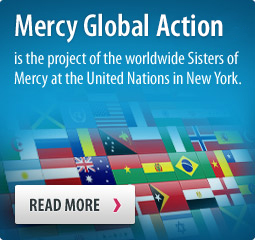
Breaking Down the proposed Global Compact on Migration: A First Glance
Reports: March 26, 2018
The Zero Draft of the Global Compact for Safe, Orderly and Regular Migration was released on February 5th.

Image: iStock. Used under licence
At first glance, what do you need to know?
- The Global Compact on Migration consists in a six part framework: a Preamble, outlining the underlying principles treaties, conventions and frameworks; a Vision and Guiding Principles section discussing the collective purpose, understandings and responsibilities; a Cooperative Framework and Objectives section followed by 22 Actionable Commitments for Safe Orderly and Regular Migration; a section on Implementation; and lastly, commitments to track progress through Follow-Up and Review mechanisms.
- The Global Compact on Migration is NOT legally binding. The Compact states "Our success rests on the mutual trust and determination of States to implement the actionable commitments contained in this Global Compact" (p.3) "...We recognize that [migration] can be a source of prosperity, innovation, and sustainable development in our globalized world...it is crucial that international migration unites us rather than divides us" (p. 2)
- While it may not be legally binding, "This Global Compact is a milestone in the history of the global migration dialogue" (p.1). While a "milestone", it is also "not the end to our efforts" (p. 3)
- The Guiding Principles of the Compact include the following: people-centered, international cooperation, national sovereignty, rule of law and due process, sustainable development, human rights, gender-responsive, child-sensitive, whole-of-government approach, and whole-of-society approach.
- Some key "Actionable Commitments" (not conclusive) include: Objective 2. "minimize the adverse drivers and structural factors that compel people to leave their country of origin", Objective 6. "Facilitate fair and ethical recruitment and safeguard conditions that ensure decent work" and Objective 10. "Prevent and combat trafficking in persons in the context of international migration".
MIA MGA at the UN attended the first rounds of intergovernmental negotiations towards a Global Compact on Safe, Orderly, and Regular Migration from February 20th - February 23rd. Over the course of the week, the global community, consisting in governments, civil society organizations, and UN agencies, shared their first impressions of the Zero Draft. Some preliminary observations from MIA MGA at the UN include a positive response on how the Zero Draft reflects what the co-facilitating states heard during the consultation phase; many of the commitments are ambitious and there are many specific objectives that refer to Mercy concerns, for example climate (Objective 2) and trafficking (Objective 10). However, despite all we have critiques, regarding how the Zero Draft successfully outlines the "what needs to be done" but does not mention a "how" or "why". For example, there is a lack of referencing the financial implications and contributing stakeholders such as international human rights and civil society organizations. In addition, there is no reference to the Global Compact on Refugees, although many are advocating the complimentarity of the two compacts.
Intergovernmental negotiations will continue until July. This gives civil society organizations, such as Mercy Global Action at the UN, four months to complete visits to Member State missions to continue advocating for human rights, vulnerable and marginalized groups, the empowerment of women and girls as agents of change, protection of children, those affected by climate induced displacement, zero toleration for discrimination, and more within the Compact.
We commit to following and reporting on the negotiations, updating you with how the Compact changes along the way. Stay tuned!
Messages to: Angela Reed rsm - MIA-MGA Coordinator at the UN




